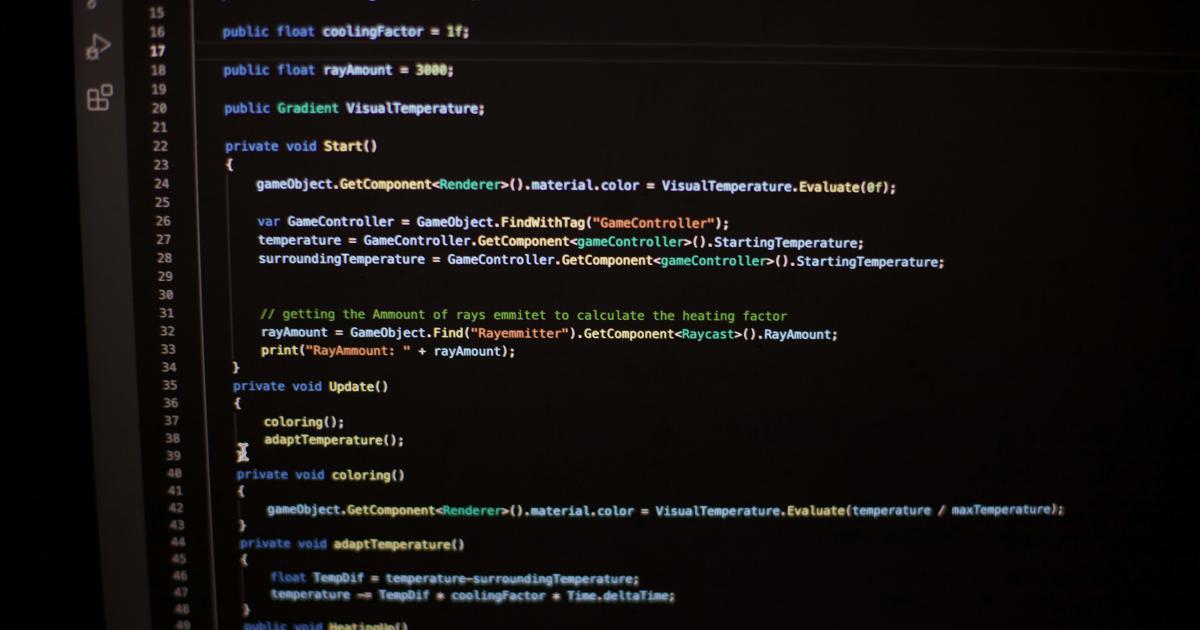Crafting a Winning Content Experimentation Framework


Understanding the Importance of Content Experimentation
In the ever-evolving digital landscape, content is the cornerstone of engaging and retaining your audience. However, creating content that resonates with your target audience can be a daunting task. Relying solely on intuition or best practices can lead to missed opportunities and suboptimal results. That's where content experimentation comes into play.
Content experimentation is the process of systematically testing and analyzing different content variations to identify the most effective approaches. By adopting a data-driven mindset, you can uncover valuable insights that inform your content strategy and drive tangible improvements in key performance metrics, such as engagement, conversion, and retention.

At its core, content experimentation is about embracing a culture of continuous learning and optimization. It allows you to move beyond assumptions and gut feelings, and instead, make informed decisions based on empirical evidence. This approach not only enhances the performance of your content but also fosters a deeper understanding of your audience's preferences and behaviors.
The Benefits of Implementing a Content Experimentation Framework
Implementing a robust content experimentation framework can bring a wealth of benefits to your organization, including:
Improved Content Performance: By constantly testing and refining your content, you can identify the most engaging and impactful elements, leading to increased metrics like click-through rates, time on page, and conversions.
Deeper Audience Insights: Content experimentation enables you to better understand your target audience's preferences, pain points, and decision-making processes. This knowledge can inform not only your content strategy but also other aspects of your marketing efforts.
Enhanced Agility and Adaptability: In a dynamic digital landscape, the ability to quickly test and iterate on your content is crucial. A content experimentation framework empowers you to respond to market changes and evolving user needs with greater speed and precision.
Reduced Risk and Increased ROI: By testing content variations before investing heavily in production and distribution, you can minimize the risk of creating content that underperforms. This, in turn, leads to a higher return on investment (ROI) for your content marketing initiatives.
Fostering a Data-Driven Culture: Embracing content experimentation sets the stage for a more analytical and evidence-based approach to content creation and optimization. This mindset can permeate throughout your organization, driving a culture of continuous improvement and data-driven decision-making.
Establishing a Content Experimentation Framework
Crafting an effective content experimentation framework involves a structured, iterative process. Here are the key steps to consider:
1. Define Your Objectives and Key Performance Indicators (KPIs)
The first step in building a content experimentation framework is to clearly define your objectives and the key performance indicators (KPIs) you'll use to measure success. These objectives should be aligned with your overall business goals and may include:
- Increasing engagement (e.g., time on page, bounce rate, scroll depth)
- Boosting conversions (e.g., lead generation, sales, sign-ups)
- Enhancing user experience (e.g., accessibility, navigation, content relevance)
- Improving content discoverability (e.g., search engine optimization, social media reach)
By establishing these clear, measurable goals, you can ensure that your content experiments are focused on driving tangible improvements.

2. Conduct Audience Research and Persona Development
To effectively design your content experiments, you need a deep understanding of your target audience. Conduct in-depth research to create detailed user personas that capture their demographics, interests, pain points, and content preferences.
Utilize a range of research methods, such as:
- User surveys and interviews
- Competitive analysis
- Website analytics
- Social media listening
- Behavioral data from customer interactions
This audience research will inform the hypotheses you formulate and the content variations you test.

3. Identify Hypotheses and Potential Experiment Variables
With your objectives and audience insights in hand, you can start generating hypotheses about content elements that may drive better performance. These hypotheses should be based on a combination of data, industry best practices, and educated guesses.
Some potential experiment variables to consider include:
- Headline or title
- Content format (e.g., text, video, infographic)
- Tone and messaging
- Visual elements (e.g., images, graphics, colors)
- Call-to-action (CTA) placement and design
- Content length and structure
- Personalization and segmentation
By systematically testing these variables, you can uncover the most impactful content attributes for your specific audience and objectives.

4. Develop an Experimentation Plan and Content Variations
With your hypotheses in place, the next step is to develop a comprehensive experimentation plan. This plan should outline the specific content variations you'll test, the metrics you'll measure, and the timeline for your experiments.
Consider the following when creating your experimentation plan:
- Establish a clear testing methodology (e.g., A/B testing, multivariate testing)
- Determine the sample size and statistical significance required for reliable results
- Allocate sufficient time and resources for each experiment
- Ensure that the content variations are distinct enough to yield meaningful insights
- Incorporate control groups to benchmark the performance of your original content
By following a structured experimentation plan, you can maintain a consistent and systematic approach to testing and analyzing your content.

5. Implement, Monitor, and Analyze Experiments
With your experimentation plan in place, it's time to execute your content experiments. Implement the necessary technical and operational processes to facilitate the testing and data collection.
As the experiments run, continuously monitor the performance of the content variations and their impact on your defined KPIs. Utilize a combination of quantitative metrics (e.g., engagement, conversion rates) and qualitative feedback (e.g., user surveys, heatmaps) to assess the effectiveness of each variation.

6. Interpret Results and Iterate
Once the experiments have run their course, analyze the data to determine the winning content variation. Carefully examine the insights gained, considering factors such as statistical significance, effect size, and potential confounding variables.
Reflect on the lessons learned and update your hypotheses accordingly. This iterative process of testing, analyzing, and refining your content is the key to continuous improvement and optimization.

7. Scale and Integrate Winning Strategies
After identifying the most successful content variations, the final step is to scale and integrate these winning strategies across your broader content marketing efforts. This may involve:
- Updating your content templates, guidelines, and production processes
- Integrating the successful elements into your content management system or marketing automation platform
- Sharing insights and best practices with cross-functional teams to align content initiatives
- Continuously monitoring the performance of the scaled content and iterating as needed
By scaling and integrating the proven content strategies, you can ensure that your content marketing initiatives consistently deliver maximum impact and ROI.

Overcoming Common Challenges in Content Experimentation
While implementing a content experimentation framework can provide significant benefits, it's not without its challenges. Some common obstacles to be aware of include:
Lack of Organizational Buy-In: Securing support and resources from leadership and cross-functional teams can be a hurdle, especially in organizations that are not yet data-driven.
Limited Technical Capabilities: Executing and tracking content experiments may require specialized tools, platforms, and technical expertise that some organizations lack.
Insufficient Sample Sizes: Achieving statistical significance for content experiments can be challenging, particularly for smaller audiences or low-traffic channels.
Difficulty Isolating Variables: Accurately attributing performance differences to specific content variations can be complex, especially when multiple variables are tested simultaneously.
Interpreting Conflicting Results: Analyzing the data and drawing meaningful conclusions from content experiments can be nuanced, particularly when results are inconclusive or contradictory.
Maintaining Momentum: Sustaining a culture of continuous experimentation and learning can be difficult, as organizations may struggle to allocate dedicated resources and maintain momentum over time.
To overcome these challenges, consider the following strategies:
-
Establish a Content Experimentation Center of Excellence: Develop a dedicated team or task force responsible for driving the content experimentation framework, providing guidance, and sharing best practices across the organization.
-
Invest in Relevant Tools and Training: Identify and implement content experimentation platforms, website analytics tools, and other technologies that can streamline the process. Provide training to ensure teams have the necessary skills and expertise.
-
Start Small and Demonstrate Quick Wins: Begin with a few high-impact experiments and use the results to build credibility and secure increased support and resources.
-
Collaborate Across Teams: Engage cross-functional stakeholders, such as marketing, product, and UX teams, to leverage their expertise and ensure alignment throughout the experimentation process.
-
Establish Clear Communication and Reporting: Regularly share experiment results, insights, and learnings with relevant stakeholders to maintain transparency and demonstrate the value of the content experimentation framework.
By proactively addressing these challenges and adopting a flexible, adaptable approach, you can overcome the obstacles and unlock the full potential of your content experimentation efforts.
Conclusion
Crafting a winning content experimentation framework is essential for organizations seeking to maximize the impact and ROI of their content marketing initiatives. By embracing a data-driven mindset and continuously testing and optimizing your content, you can uncover valuable insights, drive tangible improvements, and foster a culture of continuous learning and improvement.
Remember, successful content experimentation is not a one-time event, but an ongoing, iterative process. Stay agile, adapt to changing audience preferences, and continue to refine your framework to ensure your content remains engaging, relevant, and impactful.
Embark on your content experimentation journey today and unlock the full potential of your content marketing strategy.